 W
WThe Anglo-Nepalese War, also known as the Gurkha War, was fought between the Kingdom of Gorkha and the East India Company. Both sides had ambitious expansion plans for the mountainous north of the Indian subcontinent. The war ended with the signing of the Treaty of Sugauli in 1816, which ceded some Nepalese controlled territory to the EIC.
 W
WThe Battle of Ljubić was a pitched battle between the Serbian revolutionary forces under Miloš Obrenović and the Ottoman troops commanded by Ćaja-paša, on the Ljubić hill near Čačak. It was the largest and most significant armed engagement of the Second Serbian Uprising
 W
WThe Battle of Rocheserviere was fought at Rocheservière on the 20 June 1815, between Vendéan Royalists, who had remained loyal to King Louis XVIII during the Hundred Days, and Napoleon's Army of the West, commanded by General Jean Maximilien Lamarque. The battle ended with the defeat of the Royalist forces. Five days later the Treaty of Cholet was signed, ending the hostilities.
 W
WThe Battle off Cape Gata, which took place June 17, 1815, off the south-east coast of Spain, was the first battle of the Second Barbary War. A squadron of vessels, under the command of Stephen Decatur, Jr., met and engaged the flagship of the Algerine Navy, the frigate Meshuda under Admiral Hamidou. After a sharp action, Decatur's squadron was able to capture the Algerine frigate and win a decisive victory over the Algerines.
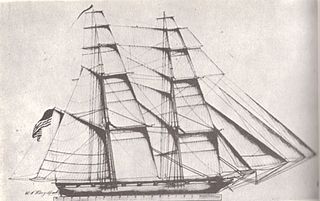 W
WThe Battle of Cape Palos was the last battle of the Second Barbary War. The battle began when an American squadron under Stephen Decatur attacked and captured an Algerine brig.
 W
WThe Bolivian war of independence began in 1809 with the establishment of government juntas in Sucre and La Paz, after the Chuquisaca Revolution and La Paz revolution. These Juntas were defeated shortly after, and the cities fell again under Spanish control. The May Revolution of 1810 ousted the viceroy in Buenos Aires, which established its own junta. Buenos Aires sent three military campaigns to the Charcas, headed by Juan José Castelli, Manuel Belgrano and José Rondeau, but the royalists ultimately prevailed over each one. However, the conflict grew into a guerrilla war, the War of the Republiquetas, preventing the royalists from strengthening their presence. After Simón Bolívar and Antonio José de Sucre defeated the royalists in northern South America, Sucre led a campaign that was to defeat the royalists in Charcas for good when the last royalist general, Pedro Antonio Olañeta, suffered death and defeat at the hands of his own defected forces at the battle of Tumusla. Bolivian independence was proclaimed on August 6 of 1825.
 W
WThe capture of USS President was one of many naval actions fought at the end of the War of 1812. The frigate USS President tried to break out of New York Harbor but was intercepted by a British squadron of four warships and forced to surrender. The battle took place several weeks after the Treaty of Ghent, but there is no evidence that the combatants were aware that the war had officially ended.
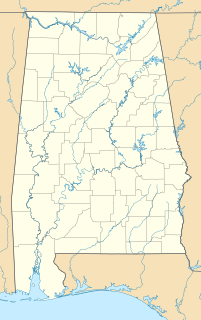 W
WFort Bowyer was a short-lived earthen and stockade fortification that the United States Army erected in 1813 on Mobile Point, near the mouth of Mobile Bay in what is now Baldwin County, Alabama, but then was part of the Mississippi Territory. The British twice attacked the fort during the War of 1812.
 W
WThe Battle of Fort Point Peter was a successful attack in early 1815 by a British force on a smaller American force on the Georgia side of the St. Marys River near St. Marys, Georgia. The river was then part of the international border between the United States and British-allied Spanish Florida; it now forms part of the boundary between Georgia and Florida. Occupying coastal Camden County allowed the British to blockade American transportation on the Intracoastal Waterway. The attack on Forts St. Tammany and Peter occurred in January 1815, after the signing of the Treaty of Ghent, which would end the War of 1812, but before the treaty's ratification. The attack occurred at the same time as the siege of Fort St. Philip in Louisiana and was part of the British occupation of St. Marys and Cumberland Island.
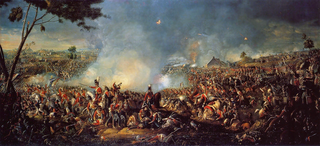 W
WThe Hundred Days War, also known as the War of the Seventh Coalition, marked the period between Napoleon's return from exile on the island of Elba to Paris on 20 March 1815 and the second restoration of King Louis XVIII on 8 July 1815. This period saw the War of the Seventh Coalition, and includes the Waterloo Campaign, the Neapolitan War as well as several other minor campaigns. The phrase les Cent Jours was first used by the prefect of Paris, Gaspard, comte de Chabrol, in his speech welcoming the king back to Paris on 8 July.
 W
WThe Invasion of Guadeloupe was the last conflict between French and British forces during the Napoleonic Wars, and took place after Napoleon's defeat at Waterloo.
 W
WThe Battle of Ligny was fought on 16 June 1815, in which French troops of the Armée du Nord under the command of Napoleon I defeated part of a Prussian army under Field Marshal Blücher, near Ligny in present-day Belgium. The battle resulted in a tactical victory for the French, but the bulk of the Prussian army survived the battle in good order and played a pivotal role two days later at the Battle of Waterloo, having been reinforced by Prussian troops who had not participated at Ligny. The battle of Ligny was the last victory in Napoleon's military career.
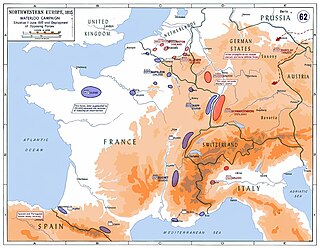 W
WDuring the Hundred Days of 1815, both the Coalition nations and the First French Empire of Napoleon Bonaparte mobilised for war. This article describes the deployment of forces in early June 1815 just before the start of the Waterloo Campaign and the minor campaigns of 1815.
 W
WOn 1 March 1815 Napoleon Bonaparte escaped from his imprisonment on the isle of Elba, and launched a bid to recover his empire. A confederation of European powers pledged to stop him. During the period known as the Hundred Days Napoleon chose to confront the armies of Prince Blücher and the Duke of Wellington in what has become known as the Waterloo Campaign. He was decisively defeated by the two allied armies at the Battle of Waterloo, which then marched on Paris forcing Napoleon to abdicate for the second time. However Russia, Austria and some of the minor German states also fielded armies against him and all of them also invaded France. Of these other armies the ones engaged in the largest campaigns and saw the most fighting were two Austrian armies: The Army of the Upper Rhine and the Army of Italy.
 W
WThe Neapolitan War was a conflict between the Napoleonic Kingdom of Naples and the Austrian Empire. It started on 15 March 1815 when King Joachim Murat declared war on Austria and ended on 20 May 1815 with the signing of the Treaty of Casalanza. The war occurred during the Hundred Days between Napoleon's return from exile and before he left Paris to be decisively defeated at the Battle of Waterloo. The war was triggered by a pro-Napoleon uprising in Naples, and ended with a decisive Austrian victory at the Battle of Tolentino after which Bourbon monarch Ferdinand IV was reinstated as King of Naples and Sicily. However, the intervention by Austria caused resentment in Italy, which further spurred on the drive towards Italian unification.
 W
WThe Battle of New Orleans was fought on January 8, 1815 between the British Army under Major General Sir Edward Pakenham and the United States Army under Brevet Major General Andrew Jackson, roughly 5 miles southeast of the French Quarter of New Orleans, in the current suburb of Chalmette, Louisiana.
 W
WThe 1815 Ottoman Invasion of Mani was one of a series of invasions by the Ottomans to subdue the Maniots. Mani was the only region of Greece that the Ottomans had not occupied due to the rough terrain and the rebellious spirit of the Maniots. The Maniots caused damage to the Ottomans by allying with the Venetians whenever there was a war between Venice and the Ottomans. They also practiced piracy.
 W
WThe Battle of Quatre Bras was fought on 16 June 1815, as a preliminary engagement to the decisive Battle of Waterloo that occurred two days later. The battle took place near the strategic crossroads of Quatre Bras and was contested between elements of the Duke of Wellington's Anglo-allied army and the left wing of Napoleon Bonaparte's French Armée du Nord under Marshal Michel Ney. While the battle was tactically indecisive, Napoleon achieved his larger strategic aim of preventing Wellington's forces from aiding the Prussian army at the Battle of Ligny, which the French won the same day.
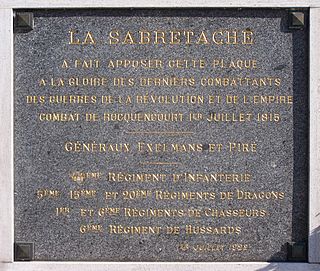 W
WThe Battle of Rocquencourt was a cavalry skirmish fought on 1 July 1815 in and around the villages of Rocquencourt and Le Chesnay. French dragoons supported by infantry and commanded by General Exelmans destroyed a Prussian brigade of hussars under the command of Lieutenant Colonel Eston von Sohr.
 W
WThe Battle of San Germano was the final battle in the Neapolitan War between an Austrian force commanded by Laval Nugent von Westmeath and the King of Naples, Joachim Murat. The battle started on 15 May 1815 and ended on 17 May, after the remaining Neapolitan force was routed at Mignano.
 W
WThe Second Barbary War (1815) or the U.S.–Algerian War was fought between the United States and the North African Barbary Coast states of Tripoli, Tunis, and Algiers. The war ended when the United States Senate ratified Commodore Stephen Decatur’s Algerian treaty on December 5, 1815. However, Dey Omar Agha of Algeria repudiated the US treaty, refused to accept the terms of peace that had been ratified by the Congress of Vienna, and threatened the lives of all Christian inhabitants of Algiers. William Shaler was the US commissioner in Algiers who had negotiated alongside Decatur, but he fled aboard British vessels during the Bombardment of Algiers (1816). He negotiated a new treaty in 1816 which was not ratified by the Senate until February 11, 1822, because of an oversight.
 W
WThe Second Serbian Uprising was the second phase of the Serbian Revolution against the Ottoman Empire, which erupted shortly after the re-annexation of the country to the Ottoman Empire in 1813. The occupation was enforced following the defeat of the First Serbian Uprising (1804–1813), during which Serbia existed as a de facto independent state for over a decade. The second revolution ultimately resulted in Serbian semi-independence from the Ottoman Empire. The Principality of Serbia was established, governed by its own parliament, constitution and royal dynasty. De jure independence, however, was attained in 1878, following the decisions of the Congress of Berlin.
 W
WThe Siege of Fort St. Philip was a battle taking place during the ending of the War of 1812 between a sizable British naval fleet attempting to sail the Mississippi River by force in order to provide reinforcements to British forces already attacking New Orleans as part of the Louisiana Campaign, and the single American garrison of Fort St. Philip guarded by a far numerically-inferior force. The siege lasted from January 9 to January 18, 1815.
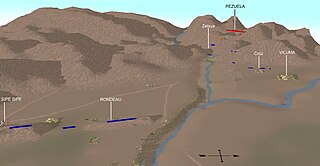 W
WThe Battle of Sipe-Sipe, also known as Battle of Viluma among Spanish historians, was a major battle in the South American wars of independence in which the United Provinces of Río de la Plata were decisively defeated by Spanish royalist forces in Upper Peru. The battle took place on November 29, 1815, and resulted in the loss of Upper Peru for Buenos Aires. The area was reannexed by the Spanish Viceroyalty of Peru.
 W
WThe Battle of Temalaca was a battle of the War of Mexican Independence that occurred on 5 November 1815 in the area around Temalaca, Puebla. The battle was fought between the royalist forces loyal to the Spanish crown and the Mexican rebels fighting for independence from the Spanish Empire. The Mexican insurgents were commanded by José María Morelos and the Spanish by Manuel de la Concha. The battle resulted in a victory for the Spanish Royalists.
 W
WThe Battle of Tolentino was fought from 2–3 May 1815 near Tolentino, Kingdom of Naples in what is now Marche, Italy: it was the decisive battle in the Neapolitan War, fought by the Napoleonic King of Naples Joachim Murat to keep the throne after the Congress of Vienna. The battle was similar to the Battle of Waterloo. Both occurred during the Hundred Days following Napoleon's return from exile and resulted in a decisive victory for the Seventh Coalition, leading to the restoration of the previous Bourbon king, Ferdinand I.
 W
WThe Battle of Waterloo was fought on Sunday, 18 June 1815, near Waterloo in Belgium, part of the United Kingdom of the Netherlands at the time. A French army under the command of Emperor Napoleon Bonaparte was defeated by two of the armies of the Seventh Coalition, a British-led coalition consisting of units from the United Kingdom, the Netherlands, Hanover, Brunswick and Nassau, under the command of the Duke of Wellington, referred to by many authors as the Anglo-allied army or Wellington's army, and a Prussian army under the command of Field Marshal von Blücher, referred also as Blücher's army. The battle marked the end of the Napoleonic Wars.
 W
WThe Waterloo Campaign was fought between the French Army of the North and two Seventh Coalition armies, an Anglo-allied army and a Prussian army. Initially the French army was commanded by Napoleon Bonaparte, but he left for Paris after the French defeat at the Battle of Waterloo. Command then rested on Marshals Soult and Grouchy, who were in turn replaced by Marshal Davout, who took command at the request of the French Provisional Government. The Anglo-allied army was commanded by the Duke of Wellington and the Prussian army by Prince Blücher.